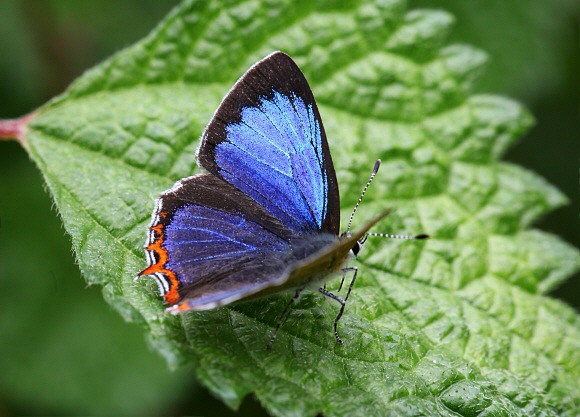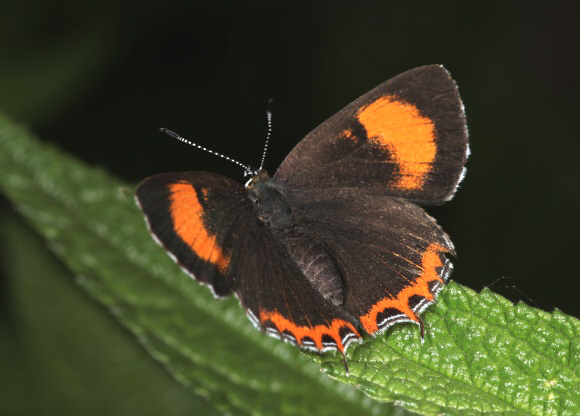
Introduction
There are 10 species in the genus Heliophorus, of which epicles, which occurs India to China, West Malaysia and Sumatra, is the most widespread. The underside wings of all Heliophorus species are yellow, marked with a red or orange submarginal band. On the upperside the females are brownish, marked with a patch of orange on each forewing and an orange submarginal band on the hindwing. In some species both sexes are marked with metallic scales, but in others such as saphir it is only the male which possesses the beautiful metallic blue sheen.
Heliophorus moorei is known from India, Tibet, Burma and China. There are 5 subspecies including the illustrated saphir which is restricted to China.
Habitats
This species frequents forest edge habitats at elevations between about 500-2000m.
Lifecycle
Unknown. It is likely however that the eggs are laid singly on the upperside of leaves, close to the stem, as in the case of other Lycaenini. The larvae are likely to be plump, woodlouse-shaped, and rest on the underside of leaves. The foodplants are unknown but are likely to be herbaceous plants in the families Polygonaceae or Plumbaginaceae.
Adult behaviour
To be completed.

